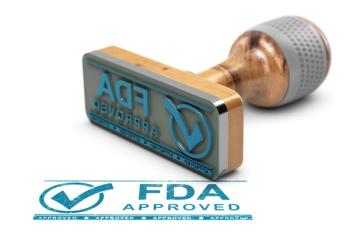
ISTH 2025: Abelacimab Demonstrates Low Periprocedural Bleeding Rates in Phase 2 Trial
Jeffrey I. Weitz, OC, MD, FAHA, FRCPC, FACP, FRSC, FACC, FESC, FCAHS, discusses AZALEA-TIMI 71 trial data showing that the long-acting factor XI inhibitor abelacimab is associated with low periprocedural bleeding risk, supporting potential simplification of anticoagulation protocols for most elective and some urgent procedures.
At the International Society on Thrombosis and Haemostasis (ISTH) 2025 Congress in Washington, DC, new data from the AZALEA-TIMI 71 trial (NCT04755283) shed light on the periprocedural safety of abelacimab (MAA868; Anthos Therapeutics), a long-acting factor XI inhibitor, in patients undergoing invasive procedures while on anticoagulation. In this interview with Pharmacy Times®, Jeffrey I. Weitz, OC, MD, FAHA, FRCPC, FACP, FRSC, FACC, FESC, FCAHS, professor of medicine and biochemistry and biomedical sciences at McMaster University, executive director of the Thrombosis and Atherosclerosis Research Institute, and past president of ISTH, discusses the clinical implications of these findings.
Weitz outlines how the AZALEA-TIMI 71 trial stratified procedural bleeding risk using established guidelines, explains why low bleeding rates observed with abelacimab may support simplified perioperative management, and addresses the pharmacodynamic considerations that distinguish factor XI inhibition from traditional anticoagulants. He also discusses the consistency of bleeding rates across procedure types, the use of hemostatic therapies, and the potential for future changes to periprocedural anticoagulation protocols.
Pharmacy Times: How did the study define and stratify procedural bleeding risk, and were those definitions consistent with current clinical guidelines?
Jeffrey I. Weitz, OC, MD, FAHA, FRCPC, FACP, FRSC, FACC, FESC, FCAHS: The procedural bleeding risk was classified as low, moderate, or high using guidance from the 2017 American College of Cardiology expert consensus decision pathway for periprocedural management of anticoagulants.1 Therefore, the definitions were consistent with current guidance.
Pharmacy Times: Given abelacimab’s long half-life, what guidance do you propose for managing the timing of elective procedures—especially for those that are not clearly low risk?
Weitz: The data on periprocedural bleeding from AZALEA-TIMI 71 suggest that, despite the long half-life of abelacimab, the periprocedural bleeding risk is low.2 Most of the patients underwent procedures associated with a low or moderate risk of bleeding. More information is needed in patients undergoing urgent procedures associated with a high risk of bleeding.
Pharmacy Times: Was there any evidence of delayed bleeding events beyond the 30-day periprocedural window, particularly in high-risk procedures?
Weitz: There was no evidence of delayed bleeding. Most bleeding events occurred within 7 days of the procedure, and all occurred within 9 days.
Pharmacy Times: How did the incidence of bleeding in the 90 mg vs 150 mg abelacimab arms compare, and do you anticipate dose-specific recommendations for procedural planning?
Weitz: The bleeding events by abelacimab dose are illustrated in the supplement to the paper by Patel SM et al. There was no dose response. There will not be dose-specific recommendations for procedural planning because only the 150-mg abelacimab dose is being evaluated in the phase 3 program.
Pharmacy Times: For the 55.8% of procedures that occurred within the dosing interval, was there any pharmacokinetic modeling to estimate circulating drug levels at the time of procedure?
Weitz: Although abelacimab has an elimination half-life of approximately 28 days, the 90- and 150-mg doses achieved a median reduction in free factor XI levels of 97% and 99%, respectively, at steady state. Therefore, even patients who hold abelacimab for 60 days are likely to have residual drug activity before invasive procedures. Despite the prolonged pharmacodynamic effect, however, the rates of periprocedural bleeding were low with abelacimab (even among those who underwent procedures within 30 days of the last abelacimab dose) and comparable to those with rivaroxaban (Xarelto; Janssen Pharmaceuticals), which typically is stopped 1 to 2 days before a procedure.
Pharmacy Times: Did the study capture and analyze any reversal strategies or perioperative hemostatic support that may have been used in the event of bleeding?
Weitz: The use of hemostatic therapies was captured. Such therapy was only in 5.1% of the procedures and mostly involved the use of tranexamic acid before or during the procedure to minimize bleeding.
Pharmacy Times: Were there any specific types of procedures (eg, dental, orthopedic, endoscopic) that showed disproportionately higher or lower bleeding rates in the abelacimab group?
Weitz: There were no procedures associated with a disproportionately higher or lower rate of bleeding with abelacimab vs rivaroxaban.
Pharmacy Times: How might these findings inform clinical decision-making in outpatient settings?
Weitz: If the periprocedural bleeding risk remains low in the ongoing phase 3 trials, it may be possible to avoid abelacimab interruption in all but the highest bleeding risk procedures.
Pharmacy Times: Did any patients undergo urgent or emergency procedures, and if so, how was bleeding risk managed in those cases under abelacimab?
Weitz: There were 59 procedures that were high risk for bleeding, including major orthopedic surgery (n=19; 32.2%), spinal surgery (n=18; 30.5%), abdominal surgery (n=7; 11.9%), procedures involving large-bore vascular access (n=5; 8.5%), cardiac surgery (n=2; 3.4%), and other high-risk or open surgery (n=8; 13.6%). Aside from tranexamic acid, no specific risk management strategies were used.
Pharmacy Times: Based on these results, do you foresee a need to revise current periprocedural anticoagulation protocols for long-acting factor XI inhibitors such as abelacimab?
Weitz: If the low risk of periprocedural bleeding with abelacimab is confirmed in the phase 3 trials, it may be possible to streamline periprocedural management and only hold the drug in patients undergoing procedures associated with a high risk of bleeding.
REFERENCES
Doherty JU, Gluckman TJ, Hucker WJ, et al. 2017 ACC Expert Consensus Decision Pathway for Periprocedural Management of Anticoagulation in Patients With Nonvalvular Atrial Fibrillation: A Report of the American College of Cardiology Clinical Expert Consensus Document Task Force. J Am Coll Cardiol. 2017;69(7):871-898. doi:10.1016/j.jacc.2016.11.024
Patel SM, Giugliano RP, Morrow DA, et al. Long-Acting Factor XI Inhibition and Periprocedural Bleeding: An Analysis From AZALEA-TIMI 71. J Am Coll Cardiol. 2025;85(23):2288-2298. doi:10.1016/j.jacc.2025.04.018
Newsletter
Stay informed on drug updates, treatment guidelines, and pharmacy practice trends—subscribe to Pharmacy Times for weekly clinical insights.


















































































































































































































